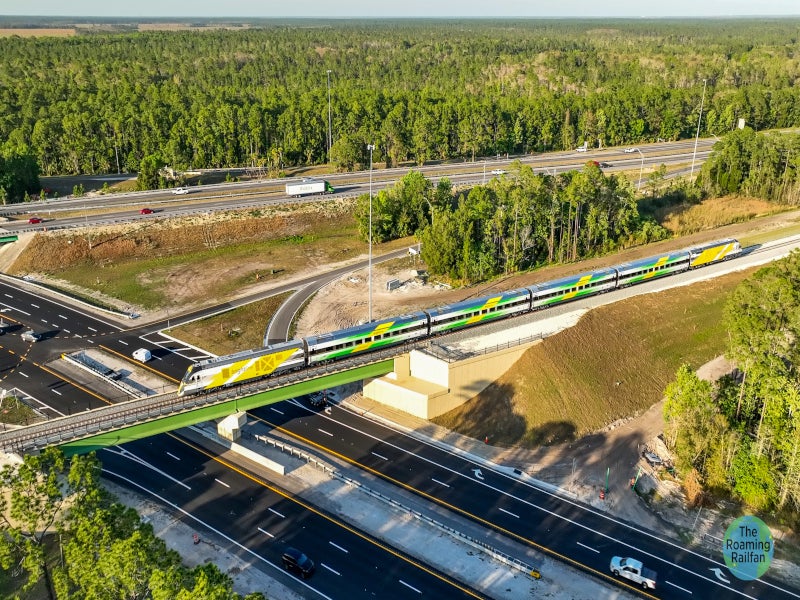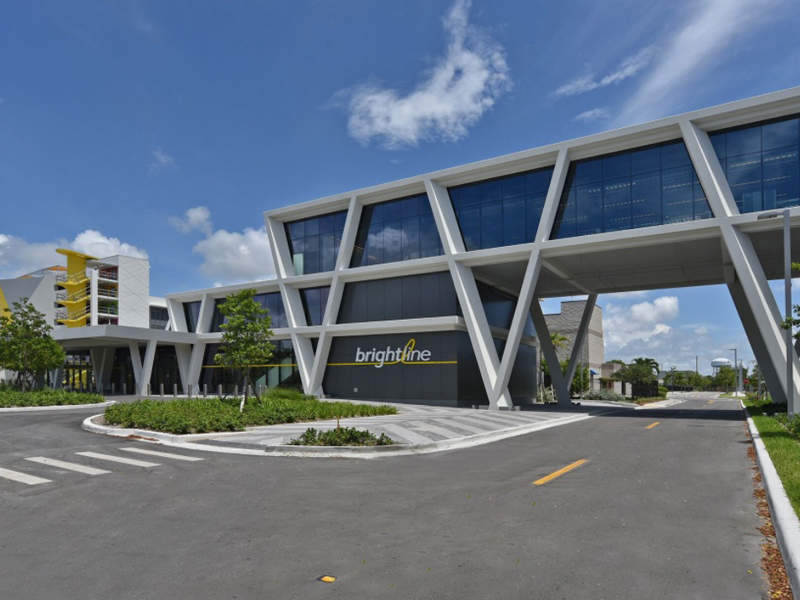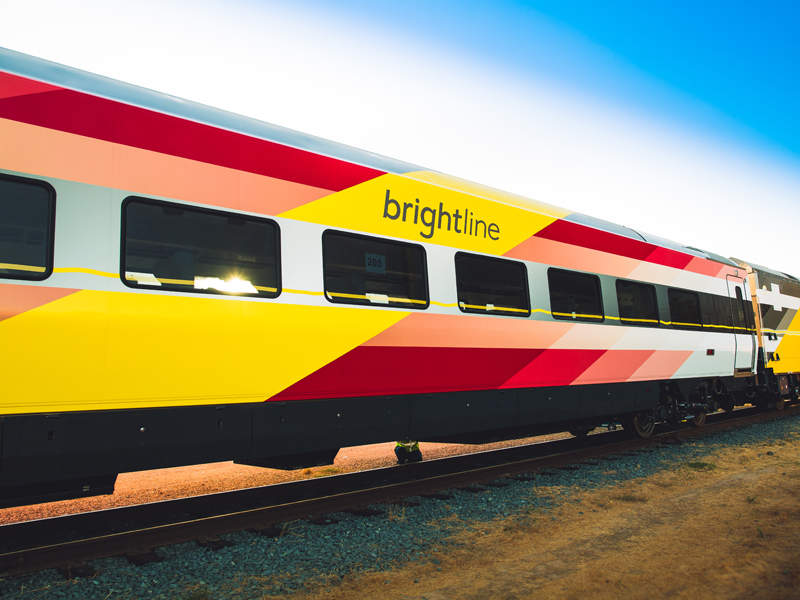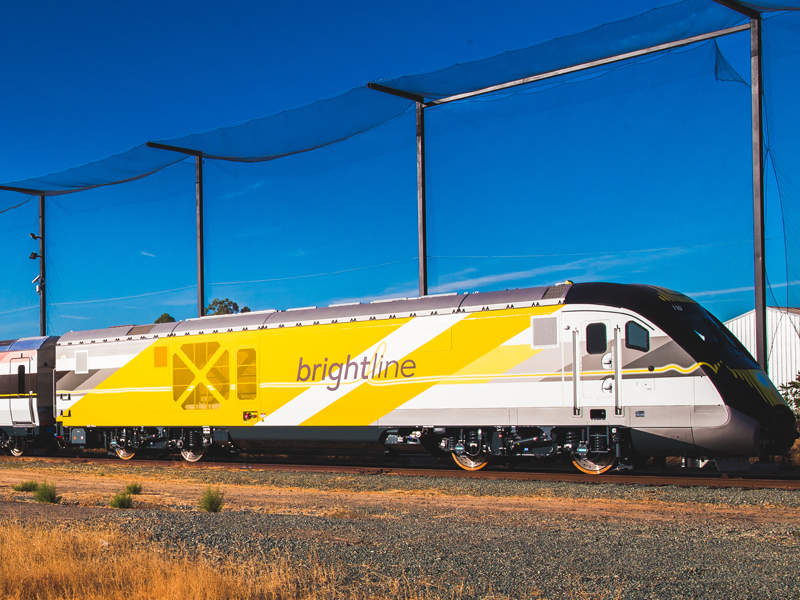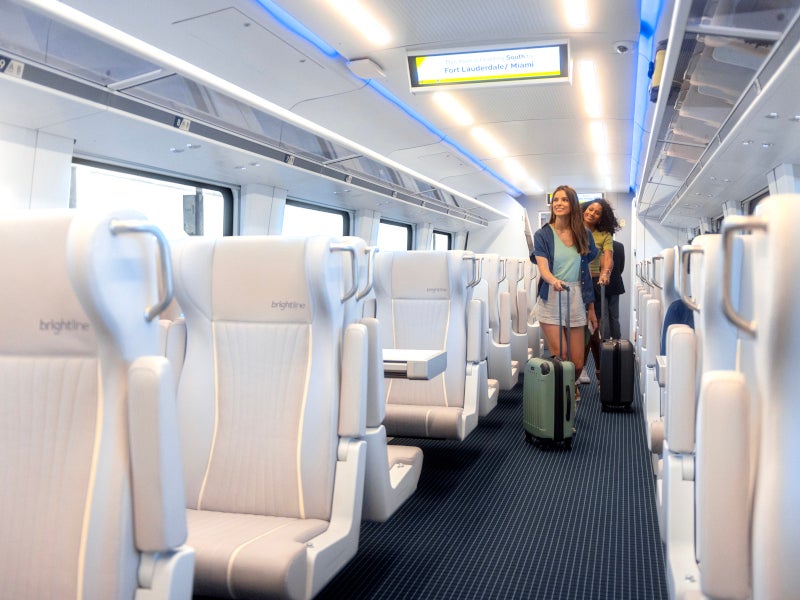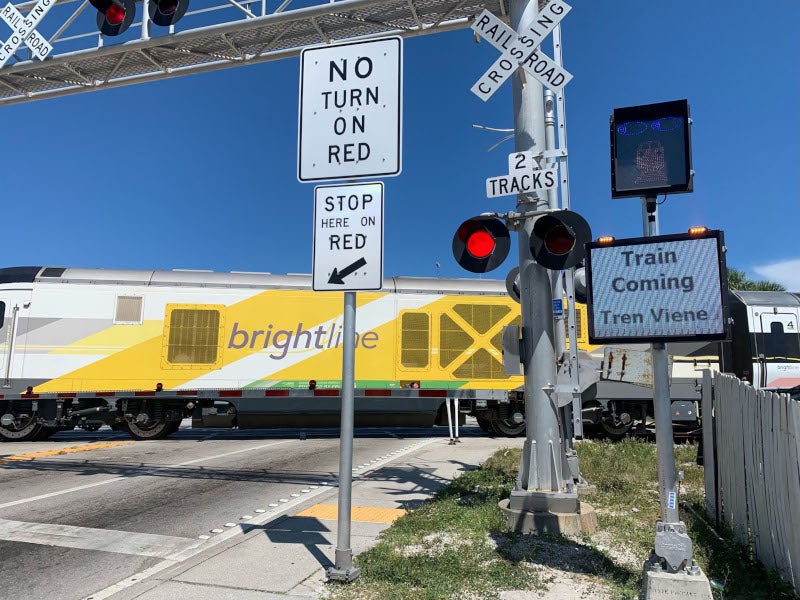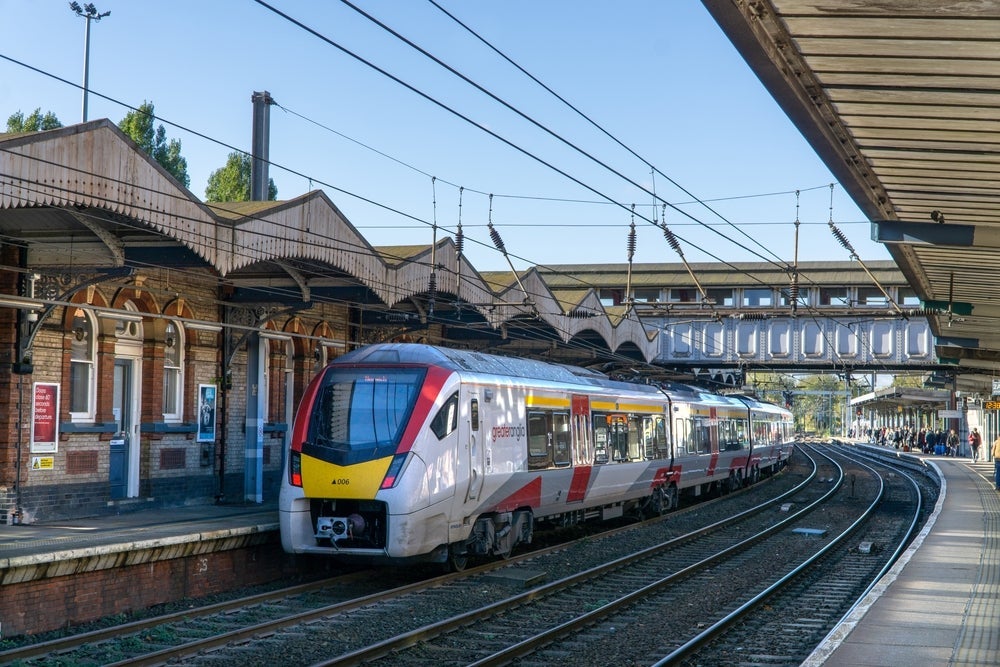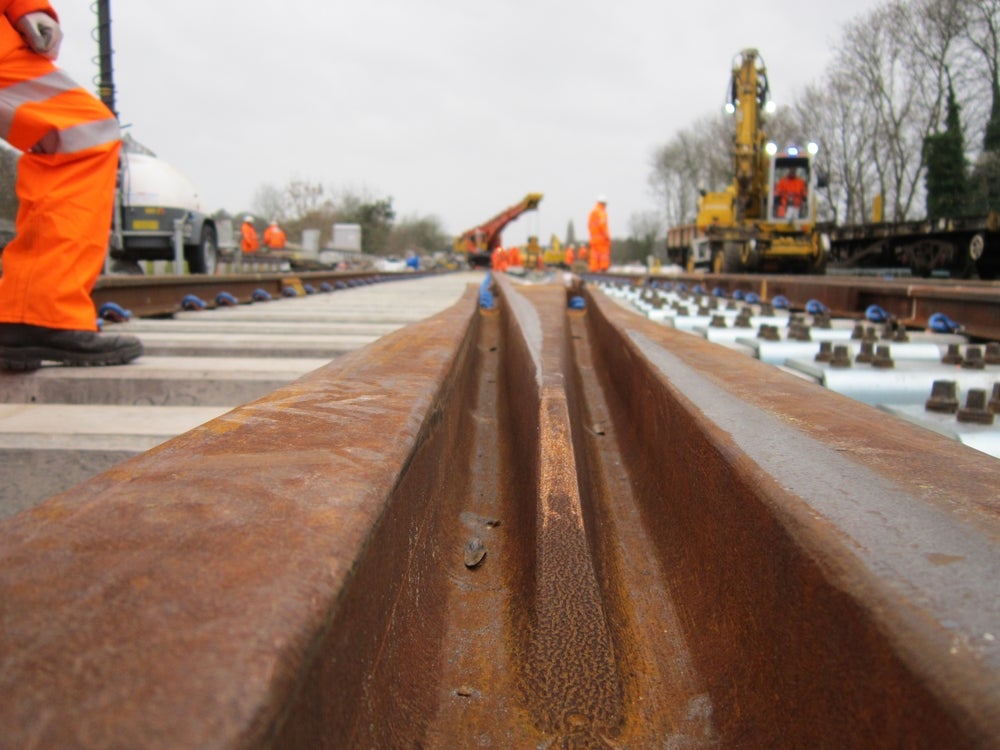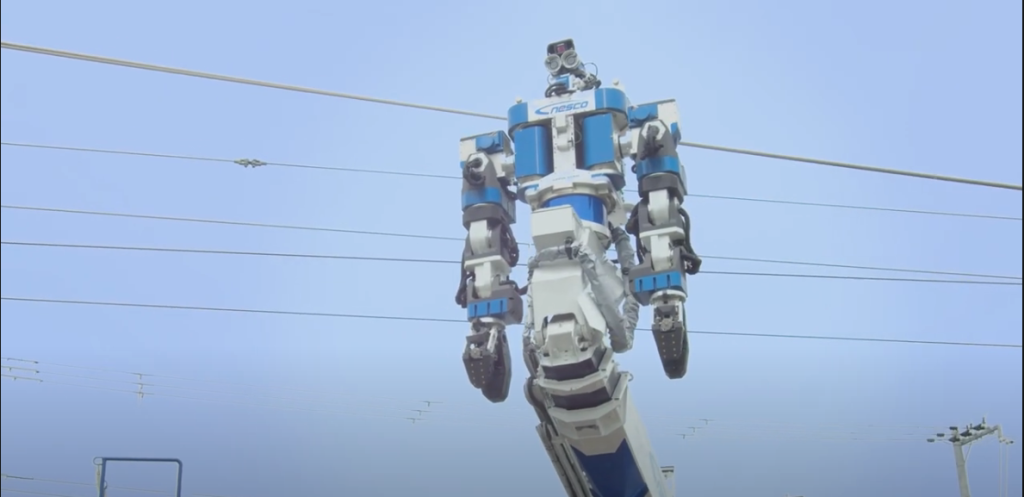Brightline is a 235-mile (378km) long high-speed railway line connecting Miami and Orlando in Florida, US. Existing lines were used for 314km of the line and the remaining 64km was new construction.
Brightline (formerly All Aboard Florida), a wholly owned subsidiary of Florida East Coast Industries, developed the line in two phases with an investment of $6bn.
The first phase of the line between Fort Lauderdale and West Palm Beach became operational in January 2018. Construction of phase two between West Palm Beach and Orlando commenced in May 2019 and was completed in June 2023.
The inter-city passenger rail service was officially inaugurated in September 2023. It offers an alternative mode of transportation for 50 million passengers who currently travel by air or road between Orlando and South Florida.
The rail service enables passengers to travel from downtown Miami to downtown Fort Lauderdale in just 30 minutes, Miami to West Palm Beach in 60 minutes, and Miami to Orlando in approximately three hours. The project generated more than 10,000 jobs and $6.4bn in economic impact.
Brightline high-speed rail line phase one routes and stations
The 65-mile (104km) long first phase connects Miami with West Palm Beach through Fort Lauderdale. It includes three stations in Miami, West Palm Beach and Fort Lauderdale.
The 479,160ft² Miami station is located in the middle of downtown Miami Central. It features residences, offices, unique retail offerings, central fare and entertainment.
The Fort Lauderdale station occupies an area of 60,000ft² featuring a comfortable lounge. It also has a new 218,204ft² park-and-ride facility with a 576-vehicle capacity.
The West Palm Beach station covers an area of 60,000ft² with scope for new development.
Brightline high-speed rail project phase two route and stations
The second phase of the Brightline high-speed rail project extended the railway line from West Palm Beach to Orlando. It included the development of 170 miles (273.5km) of new track between South Florida and Orlando.
Phase two includes three stations at Aventura, Boca Raton, and Orlando. The Orlando rail station is located within Orlando International Airport’s South Inter-modal Centre. The three-storey building covers an area of 72,000ft².
Phase three details
The third phase of the Brightline high-speed rail project is still in the design stage. It will include an 85-mile (136.7km) rail line between Orlando International Airport and Tampa.
Brightline high-speed rail line construction
Construction on the project began with the laying of new tracks between the Miami and West Palm Beach sections in mid-2014.
The existing building located on the site of the Fort Lauderdale station was demolished and construction on the new station commenced in October 2014. The external structure of the station was completed in September 2017 while the interior was finished in the second half of 2017.
Construction on the West Palm Beach station began in November 2014 and was completed in the second half of 2017.
The extension to Orlando included the construction of a state-of-the-art vehicle maintenance facility, 56 bridges of which 18 were new, and three underpasses. The box-jacking method was used for the construction of two train underpasses.
The St Lucie river bridge in Martin County was upgraded as part of the project. Built more than 100 years ago, the bridge was upgraded by replacing mechanical, electrical and control components.
The 583ft-long Loxahatchee river bridge in Palm Beach County, built in 1926, was replaced with a new structure to improve reliability and efficiency.
In addition, 156 existing railroad crossings were upgraded with new crossing gates, signal systems and pedestrian gates to enhance safety along the Brightline corridor.
Rolling stock operating on the line
Brightline railway line is served by five sets of trains: BrightGreen, BrightOrange, BrightBlue, BrightRed and BrightPink. Trains on the line travel at a speed of 125mph (201.16km/h).
The trains feature level boarding and utilise automated retractable platforms. The platforms extend up to 12in to enable easy access for disabled passengers.
The trains feature 32in-wide aisles which provide enough space for wheelchairs and prams. The trains also feature wide windows and free Wi-Fi with convenient plug sockets. Brightline also offers Starlink’s high-speed, low-latency broadband service on the trains.
The coaches provide two different experiences with one select and three smart coaches. The select coaches offer 21in-wide seats and complimentary beverages and snacks, while the smart coaches feature 19in-wide seats.
The Brightline trains also feature luggage towers, bike racks, pet carriers and restrooms with a touch-less flush facility.
Each train is composed of two diesel-electric locomotives and four stainless-steel coaches. The locomotives are powered by 16-cylinder Cummins QSK95 engines with a maximum power output of 4,000hp each. The Brightline trains run at a maximum speed of more than 200km/h.
The engine meets the requirement of Environmental Protection Agency Tier 4 standards, produces ultra-low emissions and noise, and consumes minimum fuel.
Contractors involved with Brightline high-speed rail project
Brightline placed a contract with Siemens for five train sets in 2014. The first trainset was delivered in December 2016, while the last was handed over in February 2023.
Cummins received the contract to supply the QSK95 engines for the locomotives. The interiors of the train sets were designed by the Rockwell Group.
GE Transportation was contracted to provide a signalling system for the high-speed rail service in April 2015.
Brightline contracted Suffolk Construction for the pre-construction and construction management services for the nine-acre multimodal station built in Miami.
The contract for building the Fort Lauderdale station was awarded to Adache Group and Moss & Associates.
Brightline partnered with the Florida Power & Light Company for the supply of clean biodiesel to fuel the trains.
The contractors involved in phase two are Granite, HSR Constructors, Herzog, the Hubbard Construction Company, the Middlesex Corporation, PERI and Wharton-Smith.

